The year: 1492. The trio of Spanish caravels continued their pitch and roll across the bleak expanse of virgin Atlantic waters. It had been 68 days of blindly sailing west on a featureless sea. Onboard the tiny ships we now call the Nina, Pinta, and Santa Maria (not the actual names of the ships), men swabbed decks and mended ropes and canvas out of sheer boredom in a brutal Mid-Atlantic sun. On one particularly quiet night, a lowly sailor named Rodrigo de Triana stood on the graveyard watch on board the Pinta. He strained his eyes in the quarter moon light. He thought there was something ahead; a break in the featureless line between sky and sea. Yes. It was there.
He cried out the long hoped-for words: “Tierra! Tierra!†The commotion he caused woke all on the three ships plying the quiet Bahamian waters, in spite of it being 2 am. Within hours, history would be made, and the chain of events that followed would forever change life for all species that inhabited the vast land mass beyond.
Two thousand six hundred and fifty seven miles away in an almost exactly northwest direction from the Pinta, the lightning-caused fire regime that cycled through the forest floor of interior dry Douglas-fir and aspen forests had allowed fir seedlings and aspens to sprout and establish and wend their way up through the open understory to reach for the sky and photosynthetic opportunity above.
These stately fir trees would look like the stereotypical Christmas tree for their first years around the year 1500, and then would later develop thick, corky bark like their forebears, drop their lower branches, and withstand underburning natural fires that crept through the understory like clockwork every 40 years or so. They would also survive centuries that brought microburst winds of 75 miles an hour, winter temperatures of 50 below zero that ripped open bark, heavy spring snowfalls of several feet on their limbs and occasional lightning strikes that splintered open their heavy boles. They would become survivors with roots deeply anchored in the volcanic breccia on which they established in this place in the mountains of what would be called Idaho.
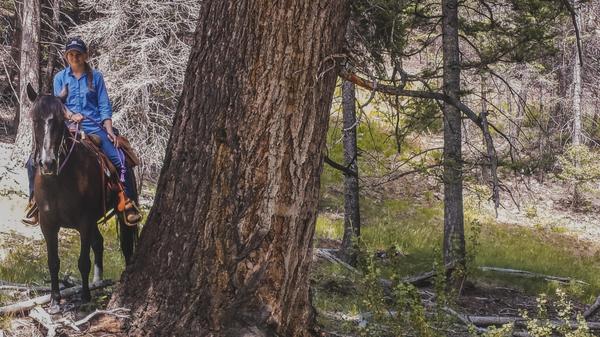
Now, 524 years after those words uttered by the Pinta’s lowly sailor, we would define this place as Old Growth forest. It had never been logged, and the passage of mankind over the forest floor was undetectable. I often feel that as I ride horseback through such forests in Hat Creek that I am the first human besides the native Shoshoni that walked on this ground.
And so, I feel privilege. We live, work and ride in an Old Growth forest. We quietly herd beeves under the coniferous canopies of sentinels. Ancient guardians of the forest, Douglas-fir trees over 4 feet in diameter and 600 years old are scattered across the landscape around Iron Mountain Camp, the 6th camp of our summer foray into the wilderness nestled along the rocky shoulder of Iron Mountain at nearly 7000 feet elevation. I can touch and walk below trees that were alive before Colombus’ voyage of discovery; their lives had spanned centuries, as they stood stoically through incredible change on the continent around them. There’s only one problem.
Most of them are dead.
I think the death count is around 90%. Many of them have already hit the ground explosively, taking down second growth trees with them. The ones that haven’t fallen are usually pocked with the 5 inch diameter holes of the pileated woodpecker, searching for grubs and bark beetle larvae on the already dead or dying tree. The bugs and woodpeckers are finishing off the prehistoric denizen.
But the bugs didn’t kill it. Other trees of its own kind did. The mechanism is pretty simple. The young trees simply crowded out grandad, using up all the moisture in our water limited dry forest environment. Many of them likely came from the giant’s own seedfall. Seems like the natural progression of things, doesn’t it? Wrong.
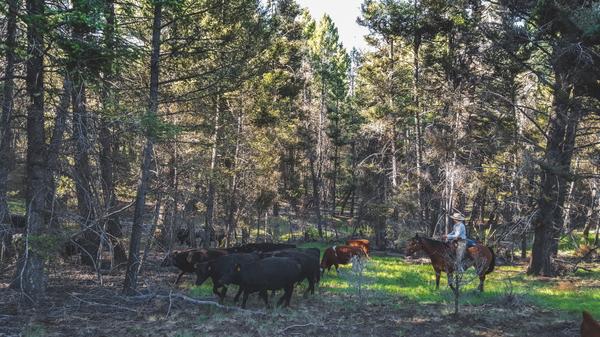
Fact of the matter is that Grandad and his fellow ancient residents of the forest should be alive and well, except that well-meaning government leaders such as Theodore and Franklin D. Roosevelt (FDR) set in motion a sequence of events that would alter the dry forests of the Rocky Mountains forever.
It started with an idea hatched by Gifford Pinchot, first chief of the US Forest Service. and Teddy Roosevelt following the “Big Burn†of 1910 where 3 million acres of Pacific NW forest land torched. These gentlemen issued a blanket order that all fires should be controlled in forests. The idea gained momentum and peaked with the “10 AM policy†of 1936 during FDR’s tenure as president. It stated that “fire was to be contained and controlled by 10 a.m. following the report of a fire, or failing that goal, control by 10 a.m. the next day.â€
Smokey the Bear started speaking out soon after, and the word control became equivalent with the words “dead out.†There would be no room for any fire, even those which naturally preserved and maintained forest diversity. The non-lethal burns under thick barked old growth trees that were understory cleaning fires would burn no more, and the natural rhythm of millennia would end. Undergrowth competition calling for more moisture would progress unfettered, and the old trees would quite literally die a slow death from thirst.
The ancient fir trees weren’t the only life forms in jeopardy. Aspen trees, whose lives depended on the same understory cleansing fires to wipe out their older and often diseased trees and reestablish new and healthy stands also would succumb to the competition for sunlight that the taller young conifers would beat them on. Their story is a little different, because the basis of their life lies underground in their roots.
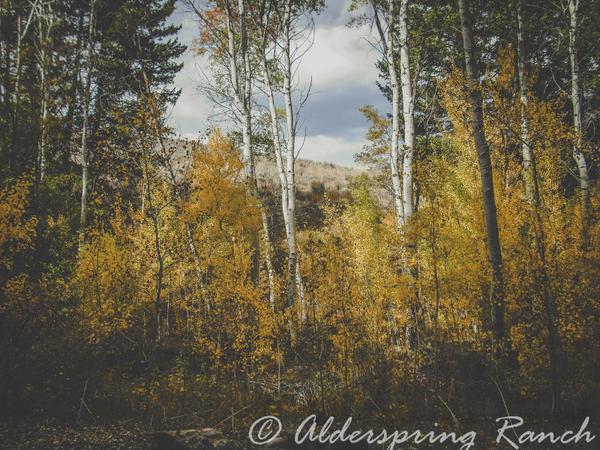
Aspen roots live a long time. Fact is, many scientists now believe that aspens are the oldest living things on the planet, and may be as old as 10,000 years old. It’s because they were maintained by fire since the last ice age, and that is believed to be the very rare time when seeding conditions for aspen were last optimal over vast areas of the American West (ideal conditions for aspen seed establishment are exposed moist mineral soils).
They are also believed to be the largest living things on the planet. It’s because they are clonal, meaning that the tree stems that look like individual trees are actually connected underground. They are nearly all root sprouts, and like potatoes, they are genetically identical. Not like twins, mind you. They are one organism, more like an octopus upside down, with each leg being a tree.
This tidbit of truth about aspen’s largesse was conveyed profoundly to me as a young man by my botany professor while I was in college in Michigan (one of many stops along my wayfaring college trail—quite frustrating to my parents). Dr. John Beebe for some reason took me under his protective wing. I was a skinny, geeky looking 19 year old kid who thought he knew stuff but really didn’t know jack squat. I spent many afternoons in his office, as he leaned back in his 1970s vinyl roller chair, hands behind head, regaling me with stories from his botanically probing past. I’ll try as best I can to recall one such tale. We were talking about osmotic gradients and water potential in plants:
“I was working for a guy studying the water potential in aspen trees in Colorado forests. As you probably know, Colorado has huge aspen stands that blanket hillsides across its Rockies. My boss was hooking up a water potential measuring tensiometer to an aspen branch on a tree he randomly chose on one such Colorado mountainside. He asked me to watch the gauge on the device, as he was going to create a disturbance in the water column within the aspen clone.â€
“I knew that aspens were clonal, and connected underground. My boss raised up a hatchet. ‘I’ll use this, and whack on another aspen tree to see how far this underground clone reaches. You’ll be able to see the gauge jump when I chop into any tree in the clone, because the water in the trees is all connected in closed system in the single organism.’â€
“I waited, a little skeptically, as he hiked across the white trunked stand of aspens. The trees were all similar sized, and had probably sprouted after a fire burned through the area 70 years ago or so. I lost sight of my boss, and waited for probably 5 or 10 minutes.â€
“Suddenly, the gauge on the tensiometer sprung to life, and a second later, I could hear the hatchet echo through the forest. There was probably a half mile between us, and evidently, he was hacking a trunk that was connected to the trunk with the water potential device. Indeed, all of those white aspen trunks were connected. They were technically all one plant.†[Side note: sound travels 4 times faster through water than air; it’s why the meter bumped before Dr. Beebe heard the hatchet blow.]
Dr. Beebe fell silent. And smiled a self-satisfied smile, because he knew he had once again elevated my preconceived notion about plant coolness.
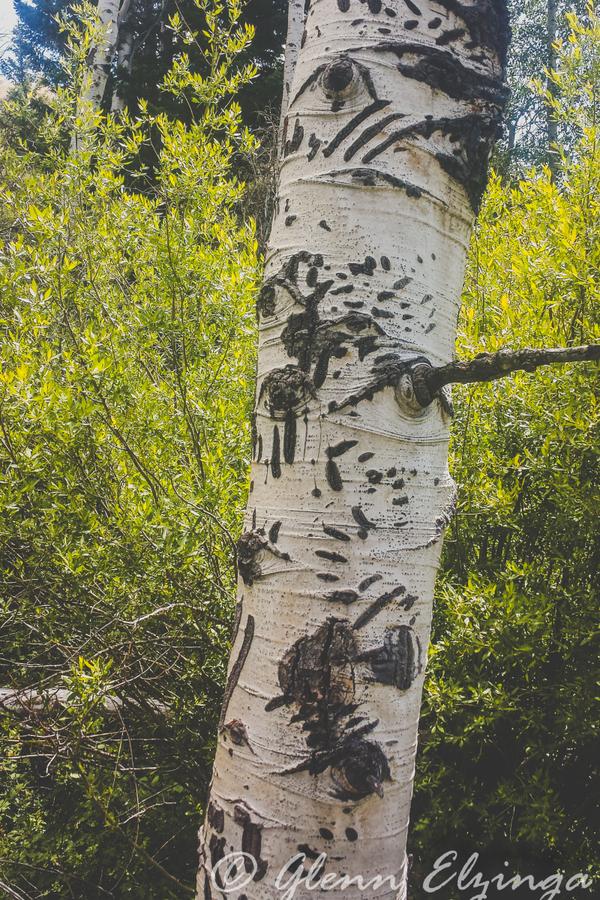
Now, as I walk through aspen stands throughout the West, the implications of the story are not lost on me. Main take home: aspen is the largest living thing. One month about 30 winters ago when I was an agency forester, I was asked by a wildlife biologist to have my crew cut down an entire aspen stand, in the amount of about 10 acres.
It was a regeneration project, and he surmised from the literature that if he cut them down, he could mimic the natural disturbance of fire to the stand, and it would regenerate new young trees with abandon, thereby increasing the vigor of the stand (some of the larger trees were dying from fungal disease typical of older aspens) and wildlife hiding cover (Before you read on, dear reader, know that our wildlife biologist’s hare-brained idea worked. That aspen stand regenerated just as he hoped with abandon, and is nearly impenetrable to walk through today, as it does when fire kills old and diseased mature trees).
But it was a lot of trees. I was cutting down nearly a hundred a day, some over a foot in diameter. Like Dr. Beebe’s stand, they were all the same age by ring count. I surmised that they were all connected underground, and they were actually one organism.
There was an incredible amount of tonnage in my aspen victims. By my forester’s rough calculations, I cut down nearly 770 tons of aspen trees, not including root weight. That was on just 10 acres. Some of Colorado’s aspen clones extend over 100 acres. Using the same value I cut in the 10 acres for s.w.a.g. estimations, that’s over 77,000 tons of biomass in one clone. For comparison, the previously believed largest living thing on Earth was the famous “General Sherman†giant Sequoia tree of California, estimated at a mere 2094 tons. That makes the humble aspen John Denver wrote songs about over 35 times more massive than the General Sherman.
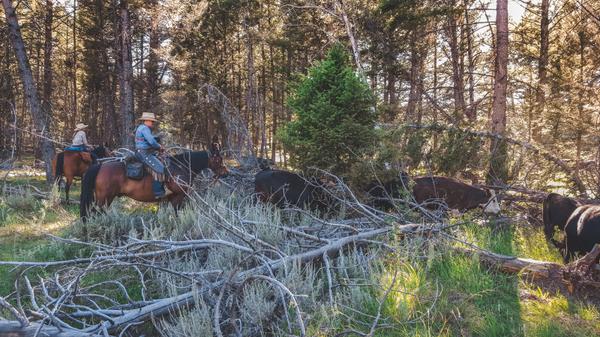
OK. You get the point. Aspens are awesome. The oldest and largest living things on Earth. But they, too, are succumbing to the slow death by thirst for water and hunger for light caused by thickly growing conifers in the understory, all because of widespread fire suppression.
In fact, my forester eyes see what had been: scattered between the old growth Douglas-fir stands, many of the younger conifer-dominated forests in Hat Creek (and much of the Intermountain West) were pure aspen stands at the time the first settlers started ranching in this part of Idaho. One only has to look at the skeletons of dead trees on the forest floor to figure that out. They are all dead aspen. It’s like a cemetery, each gray bole a tombstone of the widespread ecological diversity of what once was.
We go light with our cattle in such places, because there are many young aspen sprouting from the still-living roots, yet stunted in the dark shade of the 90 year old dense Douglas-fir overstory. If we allowed overgrazing, they may nip off the aspen leaves and twig leaders. To my thinking, that is not a good idea if you are trying to keep the remnant alive.
But with light grazing afforded by our intentional and targeted herding of our beeves, we remove some of the grass competition for water and light that the aspen deals with. And hopefully, we’ll keep them alive for that ground fire that got away, or perhaps, when the political winds of change hit, and the policy of wholesale fire suppression is challenged in the name of forest ecological health.
Don’t get me wrong; I do believe in fire suppression in many cases, especially when private property is at risk. But the ecological risk of losing key components of our wild landscapes that actually offer resilience in the face of disturbance like light fires is too great not to rethink our categorical approach to fire management.
Husbandry of any landscape doesn’t happen overnight. There have been some luminary forest ecologists working over the past 30 years to change our fire management paradigm in the West, like Dr. Steve Arno and Robert Mutch at the Forest Service Missoula Fire Sciences Lab, and Dr. Leon Neuenschwander at University of Idaho, as well as the work by Tall Timbers Research Station, the “birthplace of fire ecology.”
But change in how wildland fire is managed is slow, partly because the risks of an out-of-control burn are now so high. While many recognize the need for prescribed fire to remove some of the heavy burnable fuels and restart a more natural fire cycle with regular cool understory burns, to actually implement that on the ground is very hard.
How does this all relate to cows and raising your beef?
I recently took a Nature Conservancy biologist for a day on our 24/7 herding project. For those of you who are new to Alderspring, in simple summary this project, now in its third summer, is a pilot project to change the way cattle are managed on extensive western landscapes. We live with our cattle 24/7, keeping them in a single herd, and at all times control their grazing on the 70 square miles of western rangeland that we steward (all certified organic, by the way, which we think is another first-in- the-nation partnership with local federal agencies, who are very cool to work with). This control allows us to micromanage where cattle graze at all time.
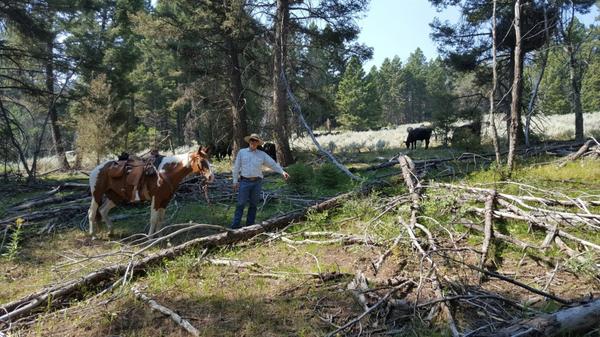
And this opens up a very cool potential project. What if we could use cattle, intensively managed by our herding, to create the firebreaks needed to control prescribed fire so that the fire does not burn out of the prescribed area into places where it may threaten private property and human life?
So…this is just in the idea stage. And there are a lot of hurdles. But the fun of working to restore the wildlands we steward while growing the very best beef for you is what keeps me getting up in the morning for what are, admittedly, often too-long days for this not-so-young man.
We are just beginning to figure out how to graze our beeves to recreate a mimic for the lost component of bison grazing in our wild ecosystems and we are learning more and more what that looks like, and how the grasses can respond favorably. We can now perhaps extend that model to the forested part of our grazing lands, and I can dust off some of my forestry background to bring to a new problem.
I believe every one of us who produces food from the land should be an ecologist, and always at work at gaining a deeper understanding of the functionality and interrelationships found in nature. Natural processes are often fragile, and easily fall to the hubris of mankind. Replacing them with a simplistic and reductionist view that the land is just dirt to add seed or chemical amendments to nearly always tramples the other species that share this planet with us. And produces really crappy nutrient-poor food to boot.
If Columbus didn’t discover the Americas, it was just a matter of time before someone else did. To the early explorers and colonizers of our land, resources of soil and vegetation were inexhaustible, and early colonizers had little understanding or interest in how nature worked. But we are running out of pristine landscapes rapidly, and if we fail to conserve and restore, our learning opportunity from nature will be too little and too late.
​​​​​​​
This I firmly believe. The best food for human health will come from landscapes that are used in sync with natural cycles and processes. We’ll continue to tread lightly, while bringing you some of the greatest nutrient density from wild landscapes in the world of protein.



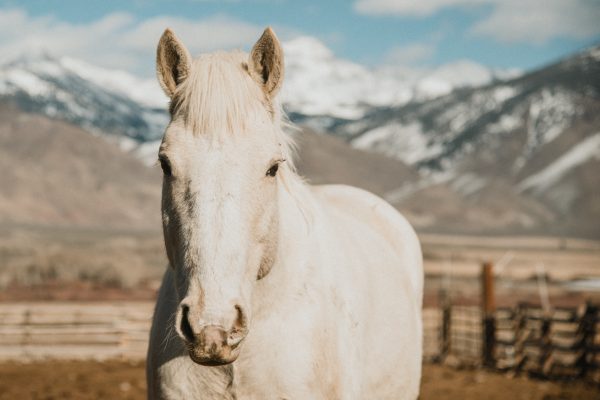
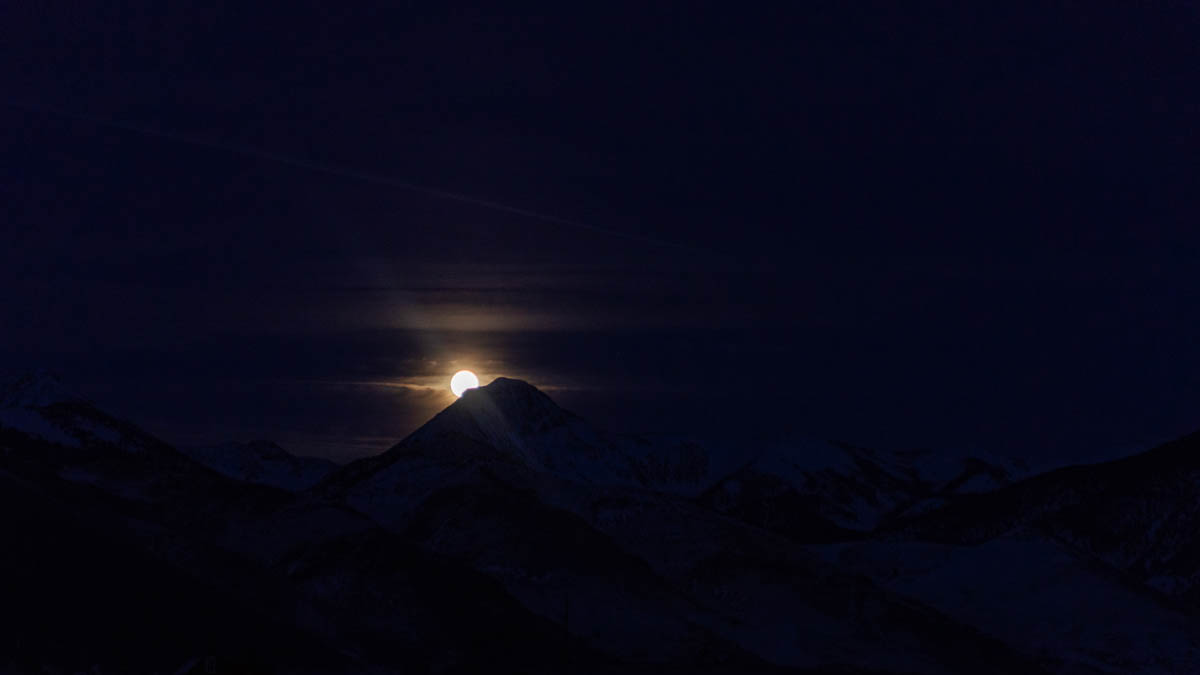
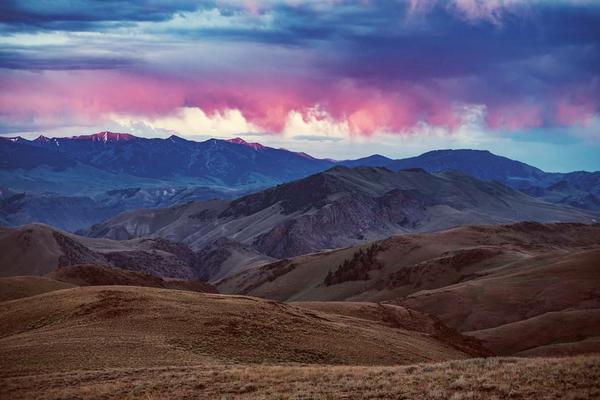
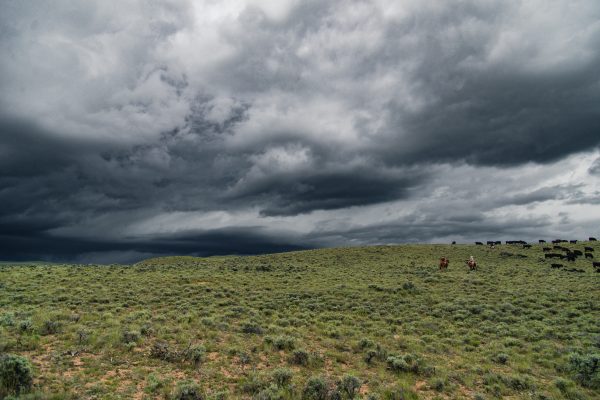
Jeff Z
Another very interesting “story.”
Caryl Elzinga
Thanks, Jeff!!
Jeff Z
Regarding the concept of using the cattle “to create the firebreaks needed to control prescribed fire”
Since cattle don’t eat everything (there are plenty of plants they won’t eat at all) how would that in and of itself create a firebreak?
I can see it being very helpful, but it would seem that something would still need to come through to take out the uneaten plants to make a strong firebreak.
Caryl Elzinga
Jeff. Once again, great question.
So it is all about the fine fuels. The one hour and ten hour fuels. Sure, they are not going to eat sagebrush or trees. But they will eat the fines–and the fines are the main causal agents for increased ROS (rate of spread–remember that from fire training?). Low wind velocities with no fine fuels can serve as great firebreaks, despite low RH and high temps.
Thanks for asking!
-Glenn
Shirley
Love reading your stories! They are so informative and interesting! But who will continue your land and animal stewardship after you’re gone? We need to clone many more like youâ£ï¸
Caryl Elzinga
Thanks again, Shirley. You are such a wonderful encourager. Your kind help us get up in the morning!
-Glenn